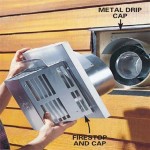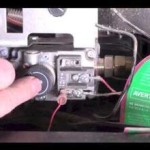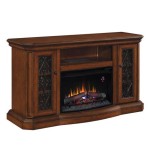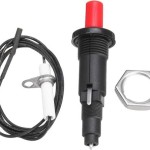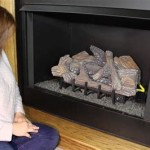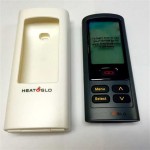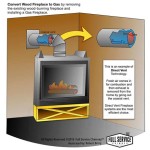Prefab Wood Fireplace Insert: A Comprehensive Guide
Prefabricated (prefab) wood fireplace inserts represent a modern solution for homeowners seeking the ambiance and warmth of a wood-burning fire within an existing masonry or prefab fireplace. These inserts are designed to slide into the firebox of an existing structure, offering improved efficiency, safety, and environmental performance compared to traditional open fireplaces. This article provides a detailed examination of prefab wood fireplace inserts, covering their key features, benefits, installation considerations, maintenance requirements, and selection criteria.
Understanding the Functionality and Benefits of Prefab Wood Fireplace Inserts
A prefab wood fireplace insert is essentially a self-contained heating appliance engineered to fit into the opening of an existing fireplace. Its primary function is to improve heating efficiency. Open fireplaces are notoriously inefficient, with a significant portion of the heat generated escaping up the chimney. Inserts address this issue by creating a closed combustion system that radiates heat into the room. The firebox is typically made of heavy-duty steel or cast iron, materials known for their heat retention and durability. Blower fans are often integrated to circulate the heated air more effectively throughout the living space.
Compared to traditional fireplaces, prefab wood fireplace inserts offer several key advantages: enhanced heating efficiency, improved safety features, and reduced environmental impact. Open fireplaces can lose as much as 90% of the heat up the chimney, while inserts can achieve efficiency ratings ranging from 60% to 80% or higher, depending on the model and technology. This increased efficiency translates to lower heating costs and a more comfortable living environment. Regarding safety, the closed combustion system of an insert minimizes the risk of sparks and embers escaping into the room, reducing the likelihood of accidental fires. Furthermore, many models incorporate safety features such as over-temperature sensors and automatic shut-off mechanisms.
From an environmental standpoint, modern prefab wood fireplace inserts are designed to burn wood more cleanly and efficiently, reducing emissions of particulate matter and other pollutants. These inserts often incorporate advanced combustion technologies, such as secondary air injection and catalytic converters, to minimize harmful emissions and meet stringent environmental regulations set by organizations like the Environmental Protection Agency (EPA).
Key Considerations for Choosing a Prefab Wood Fireplace Insert
Selecting the right prefab wood fireplace insert requires careful consideration of several factors, including fireplace size, heating needs, efficiency ratings, and aesthetic preferences. The first step is to accurately measure the dimensions of the existing fireplace opening to ensure a proper fit. The insert must be sized appropriately to fit snugly within the firebox without being too large or too small. A too-small insert will not effectively seal the fireplace opening, compromising efficiency, while a too-large insert will not fit at all.
Determining the appropriate heating capacity is another crucial step. This involves assessing the size of the area to be heated and the insulation levels of the home. Inserts are typically rated in terms of British Thermal Units (BTUs), which indicate the amount of heat produced per hour. A larger, less insulated space will require an insert with a higher BTU rating to effectively maintain a comfortable temperature. Consulting with a qualified HVAC professional or fireplace retailer can help determine the optimal BTU rating for a specific heating need.
Efficiency ratings are also a key factor to consider. Higher efficiency ratings translate to lower fuel consumption and reduced heating costs over the long term. Look for inserts that are EPA-certified, as this indicates that they meet stringent emission standards and have been independently tested for efficiency. The EPA website provides a list of certified wood stoves and inserts, along with their respective efficiency ratings. Pay attention to both the overall efficiency rating and the particulate matter emissions, as lower emissions contribute to cleaner air quality.
Aesthetic considerations are also important. Prefab wood fireplace inserts come in a variety of styles and finishes to complement different home decors. Options include traditional cast iron designs, modern steel models, and inserts with decorative glass doors. The appearance of the insert should be in harmony with the overall aesthetic of the room. Additionally, consider features such as the size and shape of the viewing area, as this will affect the visual appeal of the fire. Some models also offer options for customizing the surround, which is the decorative trim that frames the insert and integrates it into the existing fireplace.
Beyond these core considerations, it's prudent to evaluate additional features such as blower fan functionality, automatic thermostat controls, and the type of wood the insert is designed to burn. High-efficiency blower fans can significantly improve heat distribution, while thermostat controls allow for precise temperature regulation. Different inserts may be designed to burn different types of wood, such as seasoned hardwood or manufactured logs. It's essential to select an insert that is compatible with the available fuel source and that meets local regulations regarding wood burning.
Installation and Maintenance of Prefab Wood Fireplace Inserts
Proper installation is essential for the safe and efficient operation of a prefab wood fireplace insert. It is strongly recommended that installation be performed by a qualified professional, as it involves connecting the insert to a chimney liner and ensuring proper venting. The chimney liner is a crucial component, as it protects the existing chimney from the corrosive byproducts of combustion and ensures that exhaust gases are safely vented outside the home. Improper installation can lead to carbon monoxide poisoning, chimney fires, and other serious hazards.
The installation process typically involves several steps. First, the existing fireplace is thoroughly cleaned and inspected. Any necessary repairs to the firebox or chimney are addressed prior to installing the insert. Next, a stainless steel chimney liner is installed, running from the insert's flue collar to the top of the chimney. The liner must be properly sized to match the insert's flue diameter and must be securely connected to prevent leaks. The insert is then carefully slid into the firebox and connected to the chimney liner. The surround is installed to seal the fireplace opening and create a finished look. Finally, the insert is tested to ensure that it is operating safely and efficiently.
Regular maintenance is essential for keeping a prefab wood fireplace insert in good working condition. This includes regular cleaning of the firebox and chimney, as well as inspection of the chimney liner and other components. The firebox should be cleaned regularly to remove ash and creosote buildup. Creosote is a flammable substance that can accumulate in the chimney and increase the risk of a chimney fire. The frequency of chimney cleaning will depend on the amount of wood burned and the type of wood used. A qualified chimney sweep can inspect and clean the chimney as needed.
The chimney liner should also be inspected regularly for signs of damage or deterioration. Cracks, corrosion, or loose connections can compromise the liner's integrity and increase the risk of exhaust leaks. If any problems are detected, the liner should be repaired or replaced immediately. Other maintenance tasks include inspecting the blower fan for proper operation, cleaning the glass door, and checking the gaskets and seals for leaks. Replacing worn gaskets and seals can help maintain efficiency and prevent air leaks.
Furthermore, it is crucial to follow the manufacturer's instructions for proper operation and maintenance. This includes using the correct type of wood, avoiding overfilling the firebox, and operating the insert according to the recommended guidelines. By following these guidelines and performing regular maintenance, homeowners can ensure that their prefab wood fireplace insert operates safely and efficiently for many years.

New Wood Burning Prefab Fireplaces Complete Fireplace Installs

New Wood Burning Prefab Fireplaces Complete Fireplace Installs

All About Prefabricated Fireplaces Chimney Savers

Zero Clearance Vs Prefabricated Fireplace Full Service Chimney

Prefab Linear Fireplaces Expert Fireplace Installation In Your Home

Superior Prefab Wrt Wct 3000 Pro Series Indoor Fireplace Bollens Antique Hearth Llc

We Install Napoleon Majestic Prefab Fireplaces Wood Fireplace

Prefab Linear Fireplaces Expert Fireplace Installation In Your Home

Woodland Park Co Prefab Fireplace Wood Burning Installation

Fireplace Insert Basics Portland Or American Chimney
Related Posts

